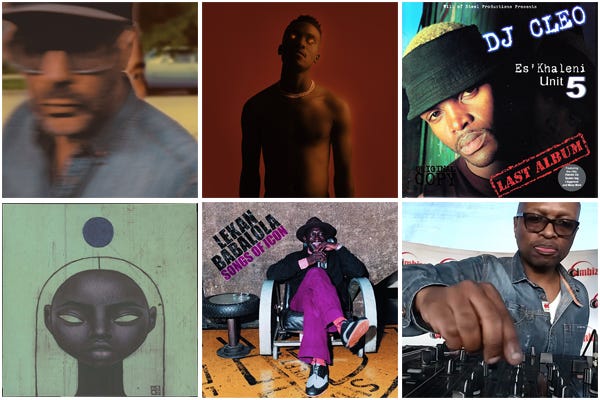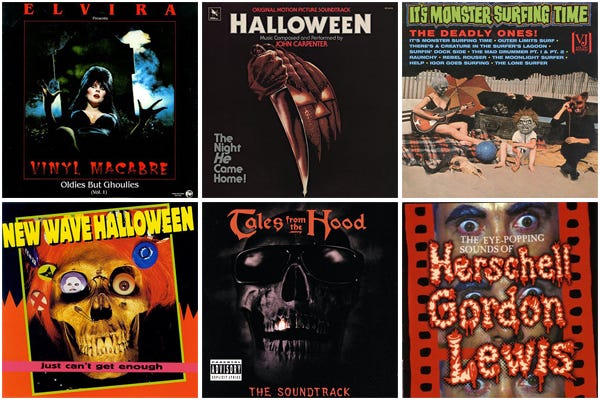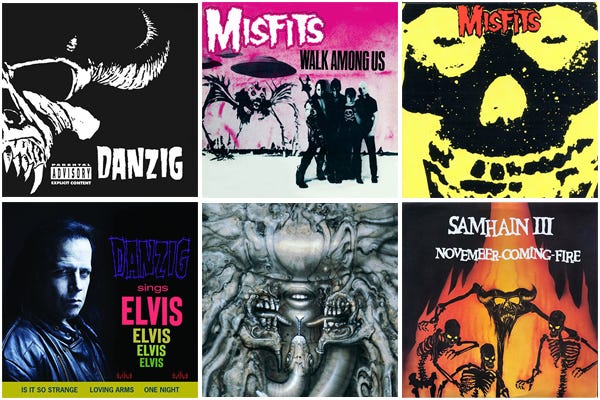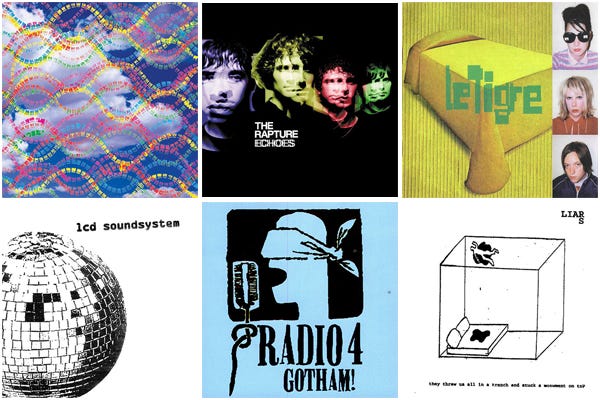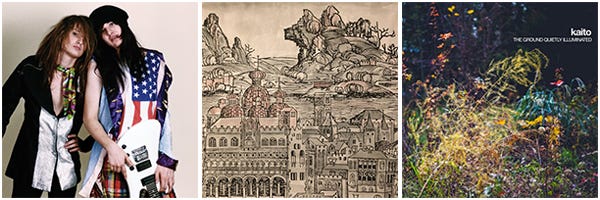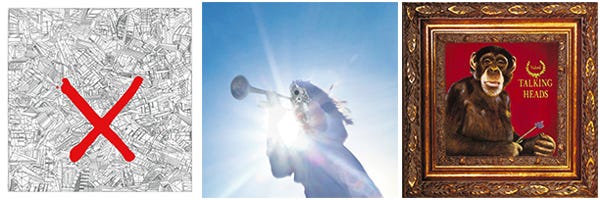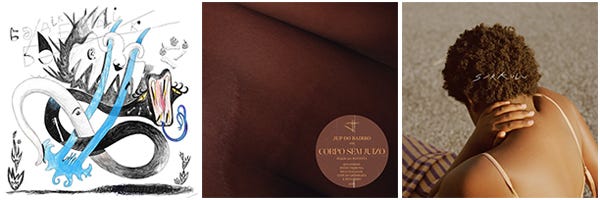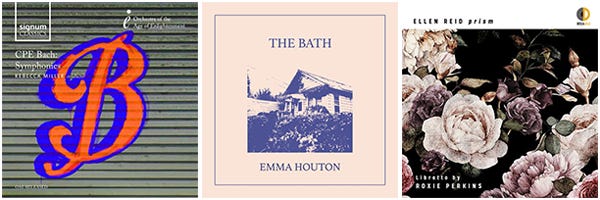New on Shfl, October 2025
Joe Muggs on Afro-House, Ned Raggett on Halloween Music, Hank Shteamer on Glenn Danzig, Joshua Levine on Dance-Punk, plus 15 all-new recommendations
Joe Muggs on Afro-House
At the time of writing, in 2025, “Afro-house” has become kind of codified as a very commercial strand of the global dance music economy. It means something smooth and lightly funky, full of signifiers of sunshine and exoticism, for wealthy audiences to luxuriate in. DJs from South Africa play undemanding sets on Russian oligarchs’ yachts moored off Ibiza for $500k a time and it’s all very decadent. But in fact, the relationship of house music to the African continent and its cultures is… well it’s as old as house music itself and older, and has been explicitly explored in many different forms over the years.
Collections
Ned Raggett on Halloween Music
A lot of what has shaped the idea of Halloween music in the American popular consciousness has specific roots from a time and place – the 1950s and early 1960s, thanks to a combination of ascendant television bringing back older horror icons from 1930s cinema, newer films in the overall genre, often crossed with science fiction efforts with their own distinctly unusual film music, and the concurrent ferment of blues, r’n’b, rockabilly and more that helped change the path of pop music in general.
Hank Shteamer on Glenn Danzig
There’s a case to be made that Glenn Danzig is the most underrated songwriter of the past 50 years. Sound far-fetched? Maybe that’s because of the way that so many facets of his persona — from his enduring obsession with comic-book horror and B-movie schlock to his once-chiseled physique and WWF-worthy image — have routinely diverted attention away from his musical accomplishments and turned him into perennial meme fodder.
Joshua Levine on Dance-Punk
Dance-punk was a primarily US phenomenon that originated in New York City, and it must be understood as the middle point between two other concurrent NYC movements – the Strokes-led rock and roll revival and the assaultive synth-pop and acid-house fusion of electroclash. All three styles marked a back-to-basics reset moment for underground music, as well as popular culture as a whole.
Reviews
Nate Patrin
Tussle — Cream Cuts
Tussle emerged out of San Francisco during that early ‘00s moment when the post-punkers started really getting into the full spectrum of ‘80s Hacienda booking. And while they didn’t notch the same level of Warp-shepherded cult-band lifer longevity that fellow Bay Area-minted dance freaks !!! did, Tussle at least had the kind of sporadic peaks that let them look at Nic Offer’s gang eye-to-eye.
Butcher Brown — Solar Music
The fun thing about the latter-day resurgence of jazz fusion is that there are many, many more things for it to fuse with now than were available in the ‘70s. Richmond’s Butcher Brown revels in this so deeply that even the title of Solar Music invokes the possibility that it’s a nod to Dick Griffey’s legendary boogie-funk label SOLAR, though even if it’s not they also trust the prospective listener enough to get the right associations from that unintentional allusion anyways.
Pulp — More
A surprisingly, unusually solid comeback album would’ve been fine. But the kind of self-aware, existentially anxious, empathy-forward cool that Jarvis Cocker’s made his m.o. isn’t the sort of perspective that diminishes with age. So surprising and unusual don’t entirely feel like appropriate terms to use for More., their first album in a staggering two dozen years.
Jon Dale
Hala Strana — Compendium
Steven R. Smith rolled out a series of albums under the name Hala Strana across the long 2000s. The vision for the project was unique, particularly for the ‘scene’ he might have been aligned with (Jewelled Antler, psych-folk, etc.) – Hala Strana was the repository for Smith’s imaginings and re-visioning of Eastern European folk music, though the material oscillated between traditional tunes and Smith’s own writing.
Redd Kross — Teen Babes from Monsanto
Teen Babes From Monsanto was the real statement, though; six covers and an extended blow-out of Born Innocent’s peak moment, “Linda Blair.” They were obviously trash pop mavens, but their knowledge was deep and smart; okay, they covered Kiss’s “Deuce” (and who wouldn’t), but the Rolling Stones’ “Citadel,” from their supposed psychedelic misstep (actually one of their best albums), Their Satanic Majesties Request? Smart move at the time, smart move now.
kaito — The Ground Quietly Illuminated
Since drifting from the Kompakt mothership, he’s been self-releasing material on Bandcamp that feels more exploratory, somehow, but shares a similar mood. The Ground Quietly Illuminated collapses those two approaches – beats and beatless – into one album, and works beautifully for it, though Watanabe’s traded the seeming-endlessness of trance for shuffling downtempo rhythms, deployed to hypnotic effect on the fifteen-minute centrepiece, “Persistence of Motion.”
Amelia Riggs
Geese — Getting Killed
Though not as chaotic as their previous records, Getting Killed finds Geese at the other end of the Having Something To Prove gauntlet and fully establishes themselves as one of the more thrilling bands currently working.
Talking Heads — Naked
I’m here to make the controversial argument that not only have Talking Heads never made an album that was less than great, but their post-Speaking In Tongues era is the band at its peak.
Richard Dawson — 2020
The album’s heart, however, shines bright in the description of little victories amongst the chaos of modern living; unfamiliar neighbors helping fix up a pub after a flood has knocked through town, a father consoles his son after a football loss, and even the act of quitting a soul-breaking job has the air of storybook heroism.
Megan Iacobini de Fazio
Kokonja — badik!
The music is uneasy and intense, but also playful and slightly hallucinatory, like on the delirious “agugigai,” where acid squiggles and fractured rhythms collide with folk timbres and bone shattering beats that suddenly drop out to make room for bright, pop-like vocal fragments that cut momentarily through the chaos.
Jup Do Bairro — Corpo Sem Juízo
Blending bass-heavy club beats, pop, and Jup’s theatrical, often spoken delivery, Corpo Sem Juízo is full of contrasts, shifting from melodic and danceable to intense and cutting.
Bitoi — Sirkulu
Across nine tracks, the group weaves improvisation, folky vocals, and phonetic bird-song patterns into a sound that is both otherworldly yet deeply bound to the natural world around us.
Sean Wood
Emma Houton — The Bath
The tranquil beauty of Emma Houton’s vocal harmonies, self-recorded here in eight parts a cappella, would be enough to make her work worth attention. But this debut release does not settle for ambient sameness; instead, she shapes her singing into a varied and rewarding landscape.
Orchestra of the Age of Enlightenment, Rebecca Miller — CPE Bach: Symphonies
The Orchestra of the Age of Enlightenment finds a perfect match in the symphonies of the CPE Bach; this is intelligent music full of energy and contrast, performed in ways musically and historically revealing.
Ellen Reid — p r i s m
Ellen Reid achieves a number of rare feats in this 2019 Pulitzer-Prize-winning chamber opera. First among them is the creation of a powerful and original sonic portrait of sexual-violence trauma. The libretto, by Roxie Perkins, is dedicated in particular to the fragmented, layered character of survivors’ suffering, and Reid’s score manages to be both disorienting and chillingly direct.


